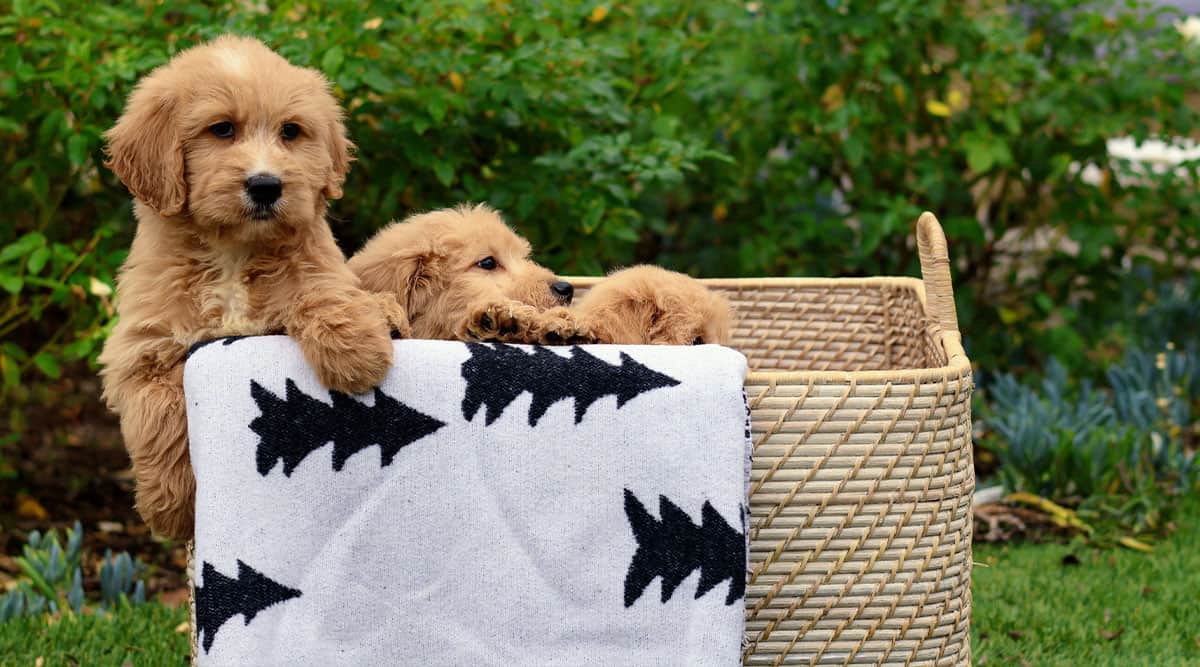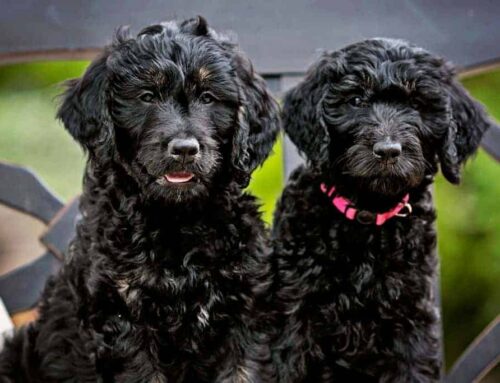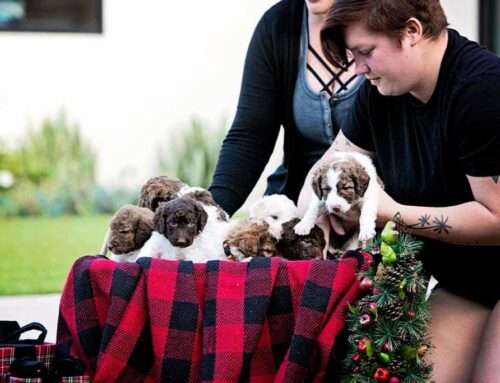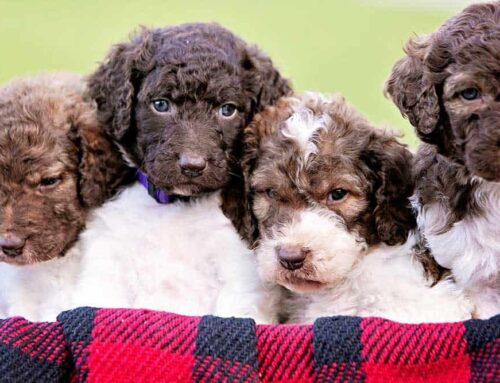Do you need help trying to understand the Goldendoodle generation chart? You are one of many to find yourself in this hurdle. The process of getting a new puppy, especially when crossbreeding, is perplexing. Before you get excited and purchase that dog, you must ask yourself several questions.
You have seen some strange cryptic letters prefixed to the phrase “Goldendoodle,” such as “F1 Goldendoodle” or “F2B Goldendoodle,” if you want to purchase a Goldendoodle. There is no doubt that you have also pondered about it. So, what do F1 Goldendoodle and F2B Goldendoodle mean?”
These are the specific Goldendoodle generation numbers. As a hybrid of the Poodle and the Golden Retriever, the Goldendoodle’s genetic makeup can shift slightly from generation to generation. Therefore, how do these generations differ from one another? In this write-up, you will learn everything about the Goldendoodle generation.
What is a Goldendoodle?
Goldendoodles remain one of the most adorable dog breeds. They are devoted, enthusiastic, and simple to instruct. Those with problems with pet allergies can rest assured that these are a good option because Goldendoodles are hypoallergenic.
If you are finding the right Goldendoodle to add to your family it requires some groundwork. Understanding generational shifts in physical characteristics like height and hair color is crucial. Furthermore, you must understand the various traits of the best breed.
Goldendoodle generation terminology like “F1,” “F2B,” and “Multigen” can add to the confusion. Before going further, let us look at these terms to give you a solid knowledge of this unique dog breed.
Brief about the Goldendoodle Generation
There are three components to each generation of Goldendoodles. A constant ‘F’ follows by a digit. A ‘b’ might be there as well. However, what does it entail?
What Does the Letter ‘F’ Mean?
‘F’ represents filial. It’s a stylish science word meaning the puppy is a mix of two or more breeds. Because Goldendoodles are crosses, it is easy to see Goldendoodle genetic traits passed from generation to generation.
What Does That Number Mean?

It shows how many times the mix has been made. More precisely, how far away it is from one of its parents. When a Golden Retriever and a Poodle are bred together, the dog is one generation away from its parents. The name for it is F1 Goldendoodle. If that F1 Goldendoodle dog has a baby with another F1 Goldendoodle, the baby is an F2 Goldendoodle, which is two generations away.
What does the ‘b’ stand for?
Some letters are capitalized, while others are not. It doesn’t matter, and backcrossing is always meant. It represents a pedigree dog from the main breeds was bred with the mix. If you cross an F1 Goldendoodle with an F1b Goldendoodle, you get an F1B Goldendoodle. If that puppy mates again, the result is an F1bb Goldendoodle.
Understanding the different Goldendoodle Generation
Now you know what each term means and how each generation of Goldendoodles came to be, we can explore different Goldendoodle generations. Toward the end, we will provide a simple Goldendoodle generation chart to make everything easy.
F1 Generation Goldendoodle
If you cross a purebred ghostwriter seminararbeit with a purebred Poodle, you get an F1 Goldendoodle. In a first-generation (F1) Goldendoodle, each pup will inherit half of its genetic makeup from each parent. This is the “classic” Goldendoodle.
An F1 Goldendoodle’s coat can look like that of either parent because of the high degree of genetic variability present in the breed. However, the dog’s color and size depend on the dominant genes and the size of the poodle parent. It could be wavy like a Poodle’s, straight like a Golden Retriever’s, or something in between.
Due to this, F1 Goldendoodles may shed more than other breeds of dog, especially if their coat is the same as the Golden Retriever. Therefore, an F1 Goldendoodle might not be the best choice if you have pet allergy issues.
However, compared to purebred Golden retrievers, F1 Goldendoodles are less likely to develop the same set of health problems. This is because the genetic diversity of hybrids exceeds that of either parent. You will see more about this in our Goldendoodle generation chart.
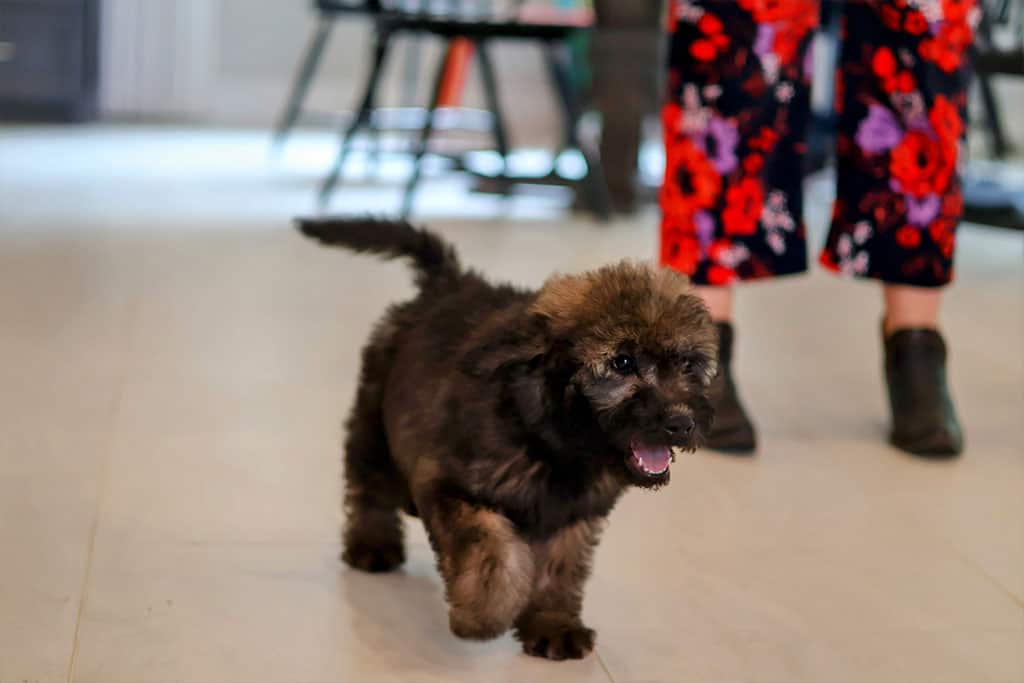
The cost of an F1 Goldendoodle is often the lowest of any generation. They are the most populous generation. Puppies can cost anywhere from $1,000 to $5,000, depending on their color, size, and breed.
F1b Goldendoodles
To create F1b Goldendoodles, a Poodle is used in a backcross. There are 75% Poodles and 25% Golden Retrievers in the resulting Goldendoodle breeding generations. You should check with the breeder to ensure the backcrossing is not with a Golden Retriever, which is possible but unlikely.
The coat of an F1b Goldendoodle, in which the Poodle component is 75%, would be much curlier. It might be slightly coarser than an F1 Goldendoodle and shed significantly less. They are a great alternative, and the hybrid vigor helps, but they aren’t relatively as hypoallergenic as a Poodle.
The costliest type of Goldendoodle is the F1b variety, which can cost as much as $5,000 to $6,000. They are not affordable for most people, and breeders highly price them because of their desirable traits.
In summary
- When a breeding poodle and a Goldendoodle have a baby, it’s called an F1 Goldendoodle.
- Puppies are 75% poodle and 25% golden retriever.
- A coat that does not cause allergies.
- Curly Hair
F1BB Generation Goldendoodle
Goldendoodles from the F1BB generation have the most DNA common with Poodles. This is because they are backcrossed twice with a Poodle, which means that one of their parents is an F1B Goldendoodle, and the other is a purebred Poodle.
F1BB generation Goldendoodles are made for allergy sufferers because their DNA is close to that of a poodle. They are most likely to be completely allergy-free and not shed at all. Therefore, you should get an F1BB Goldendoodle if you have bad pet allergies.
Nevertheless, there is one thing to remember. Because F1BB Goldendoodles have a lot of Poodle DNA, they don’t have as many genes as other dogs. This means they will have a very curly, hypoallergenic coat that takes a lot of work to care for at home.
Because there are fewer F1BB Goldendoodle dogs, they cost more. Again, prices rely on where you live and how well-known the breeder is, but you can pay between $2,000 and $5,000 for an F1BB Goldendoodle puppy.
F2 Goldendoodle
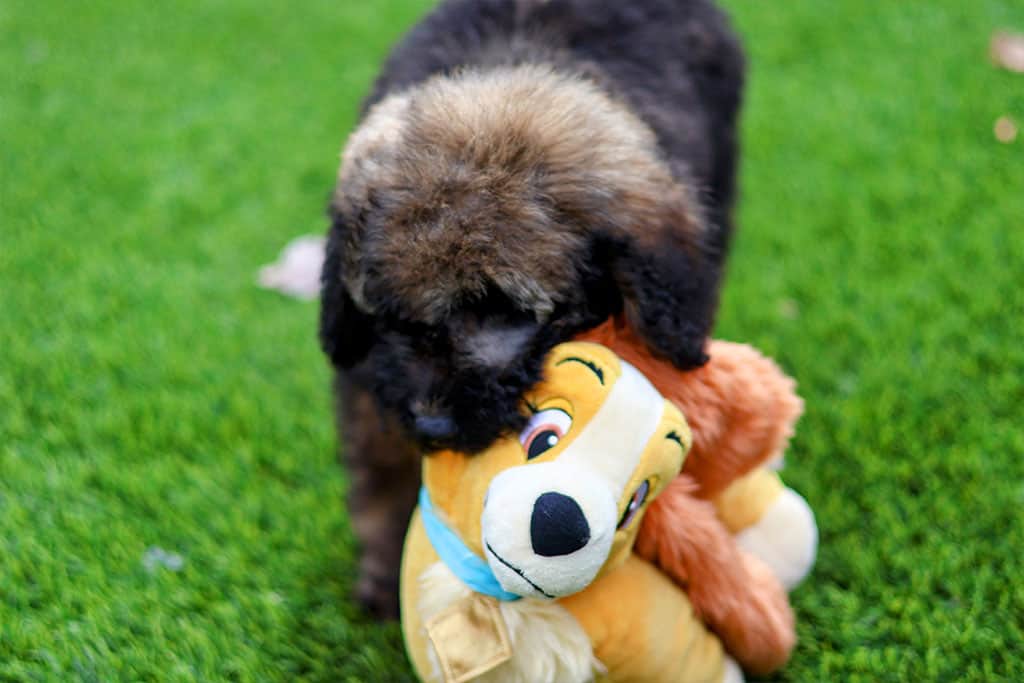
An F2 Goldendoodle can be made from different sets of parents. These Goldendoodles from the second generation can be made by breeding an F1 with an F1, an F1 with an F1B, an F1 with an F2, etc. Most of the time, two Goldendoodles from the first generation are mixed to make Goldendoodles from the second generation.
F2 Goldendoodle puppies are rare because it’s hard to tell what traits will come out of them. Most of the time, this leads to Goldendoodle dogs that look and act more like Golden Retrievers. If you don’t have allergies and want your Goldendoodle to look like a Retriever, an F2 might be the right choice.
Due to their lack of predictability, F2 Goldendoodles usually cost less than backcrosses. Remember that prices can vary a lot and depend on size, color, breeder reputation, and location. Goldendoodles can cost anywhere from $1,000 to $5,000 on average.
F2B and F2BB Goldendoodles
You won’t find any Goldendoodles rarer than these. They come in all shapes and sizes, but when backcrossed with a Poodle, they tend to take on the poodle’s course, curly coat, and high maintenance needs. Shedding can range from negligible to substantial, depending on the F2 Goldendoodle utilized.
This F2B generation of Goldendoodles has a considerable amount of poodle genes, resulting in a curly or wavy coat. This suggests that the Goldendoodle will shed less hair and therefore be less likely to cause allergic reactions in people. On the other hand, just like with most hybrid dogs, there will always be exemptions to the genetic guidelines.
More Poodle characteristics mean a higher price tag. They can cost anywhere from $1,000 to $5,000, with F1bb typically costing more.
F3 Goldendoodle
The Multigenerational Goldendoodle is another name for the F3 Goldendoodle. This Goldendoodle is at least the third generation. An F1B Goldendoodle is often mixed with another F1B Doodle to make an F3 Goldendoodle. You could also cross an F3 Goldendoodle, an F2 Goldendoodle, and a second F2 Goldendoodle.
F3 Goldendoodles have many Poodle genes, which is suitable for people allergic to dogs. The hair of an F3 Goldendoodle can have a curly or heavy wave, which makes it perfect for people with allergies.
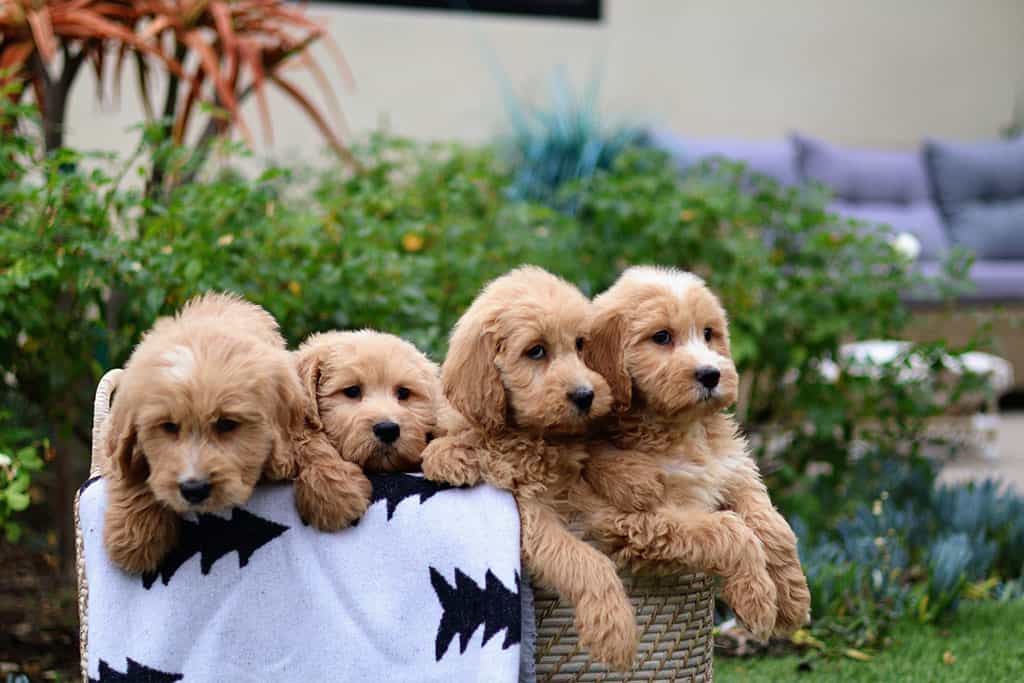
Goldendoodles that are more than the second generation are called “multi-generation.” This includes the F1BB, F2B, and F2BB versions of Goldendoodles, among others. You must ask the person who raised your Goldendoodle how many generations it is.
Why do we have different Goldendoodle Generations?
Breeders would like to have more control over genetics. First-generation doodles (F1) are half poodle and half retriever, but they can be quite different because they can get features from other Goldendoodle breed standards.
The first-generation Goldendoodle will always get the hair gene from its golden retriever parent. It could shed as much as a full Retriever. Because F1s should usually shed, we suggest getting a multigenerational doodle whose coat has been tested genetically if you want a hypoallergenic dog.
The Ultimate Goldendoodle Generation Chart
| F1 Goldendoodle Generation | F1B Goldendoodle generation | F2 Goldendoodle Generation | |
| Parents | Golden retriever and poodle | F1 Goldendoodle and Poodle | F1 goldendoodle and F1 goldendoodle |
| Appearance | Most like a golden retriever in looks, it has a wavy, long coat and still sheds. | The one that looks most like a poodle. It is a Goldendoodle pedigree. Its hair is wavy or curly and sheds the least of the three. | Most unexpected in how it looks because of all the genetic mixing that is going on. |
| The primary purpose of breeding | Mildly hypoallergenic, for companionship. | Since it has poodle blood, it is the least allergic and smartest. | Possible sensitive uses, but bred to bring out the best in both dog breeds |
| Behavior | This choice is less allergy-friendly and more playful than the other two. It is the most like a golden retriever of the three. | Most poodle personalities and behaviors are smart and suitable for people with allergies or who want less hair. | The most unpredictable of the three, but also the one who most closely resembles a poodle and a golden retriever in terms of personality. |
| Cost | Expensive | The price depends on several things. | Least expensive |
FAQs
What is a Goldendoodle Generation Chart, and How Does It Work?
A Goldendoodle generation chart shows how breeders come about the different Goldendoodle. It shows the outcome of a particular breed with another generation. For instance, you can see the parents or ancestry of F1 Goldendoodle to be Golden retriever and poodle. The same applies to other generations like F1B, which involves the F1 generation and poodles.
What are the different generations of Goldendoodles and their characteristics?
Goldendoodles are a mix of golden retrievers and poodles. The Goldendoodles generation includes the F1, F1b, F2, F2b, and F3. Though there are some differences between F1 and F1b, all Goldendoodle generations are smart and loyal to their owners. Active and fun, doodles get along well with children and are great for people who have never had a dog.
How Do I Interpret a Goldendoodle Generation Chart When Choosing a Puppy?
The Goldendoodle generation chart always comes with the generation and certain features like parent, behavior, costs, appearance, and purpose of breeding. With this, you can determine what suits your needs when choosing a puppy. If you want a friendly Goldendoodle, the chart provides everything you need.
How Does the Generation of a Goldendoodle Affect Its Size and Coat Type?
The generation of a Goldendoodle refers to the breeding process of a Golden Retriever and a Poodle. The first-generation Goldendoodle is typically larger in size and may have a more unpredictable coat type, while subsequent generations may have more consistency in size and coat type.
How Does the Generation of a Goldendoodle Affect Its Price or Cost?
The price or cost of a Goldendoodle can vary depending on numerous factors such as breeder reputation, location, and demand. First-generation Goldendoodles tend to be more expensive due to their unpredictability, while subsequent generations may be less expensive due to increased predictability in size and coat type. Other factors that can affect price include health testing and training.
Conclusion
Knowing what to look for in a Goldendoodle generation chart is important for new breeders or dog owners. It enables you to determine what you want in a pet. Every generation is unique. The best option for a minor pet allergy is an F1B Goldendoodle. Nevertheless, all the Goldendoodle generation can serve whatever the need might be.
